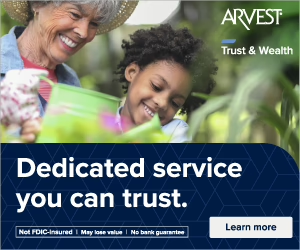When you consider a rocket launching into space, or an aircraft carrier traversing the oceans, you understand they are large vessels unable to change paths quickly. Their trajectory must be clear from the beginning to arrive at their planned destination on schedule. Small changes in the beginning make a big impact on the direction of travel over time, and course corrections require much more effort the further they occur from the starting point.
This concept and construct of momentum applies to more than just objects in space or on water–it applies to the movement of entire industries, ideologies, or individuals. It can apply to the lifelong endeavor we go through to achieve our financial goals and financial independence.
Consider this example of how timing affects the final destination in investing. Two individuals have long-term goals for their retirement, which is still far away—approximately 35 years away. However, they pursue different paths. The pioneer decides to invest $25 a week into a 401(k), continues this process for 10 years, then stops completely. This is one trajectory for a retirement path.
The straggler starts when the pioneer stops and invests $25 dollars a week for the next 25 years. Assuming an average 7% compounding investment return over the 35-year period, the straggler never catches up. Even though the pioneer only contributed $13,000 in capital and the straggler put in $32,500, the pioneer ends up with $100,831 compared to the straggler’s $85,046!
Do not let an unknown ending prevent you from getting started.
The movie directors may have a vision before production starts. However, turning their vision into reality is part of the craft of filmmaking. The directors may discover valuable skills among the actors and crew over time, but they also may encounter insurmountable, unexpected challenges. Good directors and leaders incorporate the best of everything into an evolving vision and end up with something even better than they imagined in the first place.
They may not know the final destination in its entirety, but they know they must get started to get anywhere, so they jump into the rabbit hole to find out what they can do. As Alice in Wonderland learned when she asked the Cheshire Cat which way she ought to go, “If you do not know where you are going, any road will get you there.”
There may not be a single correct road to create financial independence. However, some early steps may improve one’s ability to pivot and adjust momentum to fit a new trajectory when needed. Even when the final destination is unknown, one can gather resources and start taking necessary steps to turn the vision into reality over time.
One of those early steps is building and maintaining a budget.
It is important to view budgeting as an opportunity to empower yourself, rather than a barrier to restrict yourself.
Not all people have the same wants and needs. For some, a cup of Starbucks coffee each morning may turn their rough start into a good start. For some, it is different from home-brewed coffee and improves their productivity at a job, which in turn provides a great income. Good budgeting should take a hard look at routine expenses, and decide if the cup of coffee is considered a need or a want. It may be necessary for some, and unnecessary for others.
If it is a need, then you should not feel guilty or bad about it. For some, certain entertainment choices may be incentives, which motivate them. Rent and food are not the only needs in life. For example, investing in retirement and protecting loved ones with insurance should be considered needs. However, not all expenses are needs and often expenses for entertainment belong in the ‘wants’ category.
When you begin defining your basket of expenses by how much they improve your life and by how willing you are to give them up, you begin creating priorities. This allows you to quickly change your spending trajectory, should a large, unexpected but necessary, expense come up. Additionally, it provides an opportunity to revisit expenses and evaluate if they are still justified. Sometimes subscriptions or routine expenses become habitual and are not as helpful as they once were.
Another step is defining actionable goals and steps
The path to achieving your financial goals and finding stability is a lifelong endeavor.
As wealth grows, so do the needs and goals the wealth should accommodate–new family members may be born, a new home may be purchased, a entrepreneurship may be launched, education funds may be needed.
There are many paths available when it comes to navigating family wealth—way beyond basic budgeting. One may start feeling more and more like Alice having jumped into the rabbit hole. The Cheshire Cat’s advice can help you get started, but eventually it may be helpful to add a cartographer to your crew who knows where the paths lead. The trustworthy advisor should help define your goals into actionable steps and revisit your trajectory each year to ensure you are still heading toward your desired destination.
In the financial planning world, that cartographer is a client advisor, such as those at Arvest Wealth Management. They can help you identify which variables to consider and develop appropriate strategies based on your current assets, needs, and risk tolerance.
This content has been prepared by The Merrill Anderson Company and is intended as a general guideline.
© 2022 M.A. Co. All rights reserved.





